"Oh, you here too?"
Dandelion. The name alone is extremely melodious, in all languages: Dandelion - Löwenzahn - Pissenlit - Diente de león - Mælkebøtte - ... The fact that you can also easily make your own dandelion champagne from the blossoms is the crown on the head of this powerful flower. Some say that this great plant is a weed, because it spreads so effortlessly. I say never!, and celebrate it at every corner where it beams at me.
Dandelion sparkling wine is a delicious spring drink to celebrate the end of winter
In late spring, everything is full of the beautiful, large, yellow flowers. They taste sweet and pleasantly of nectar and honey. You can not buy them, you have to pick them yourself. This is best done away from busy roads and not necessarily in the dog park. If you have a garden, you probably don't need to do much, except for waiting. For me it took about three years until the first dandelions appeared, and now I already have a whole plantation.
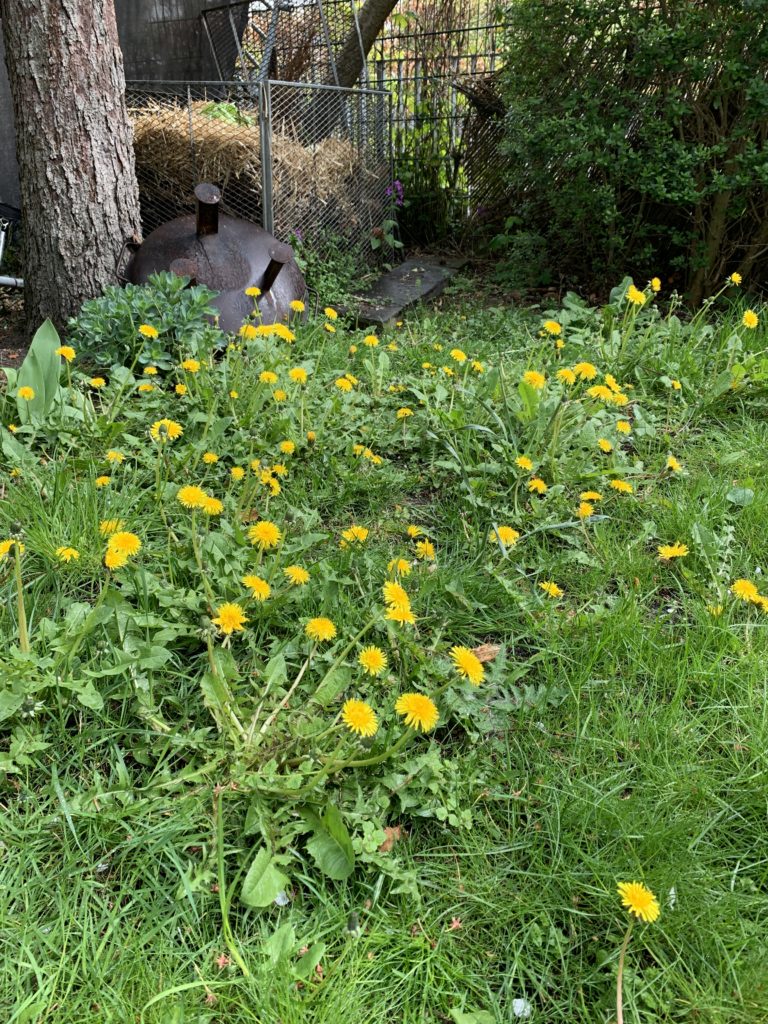
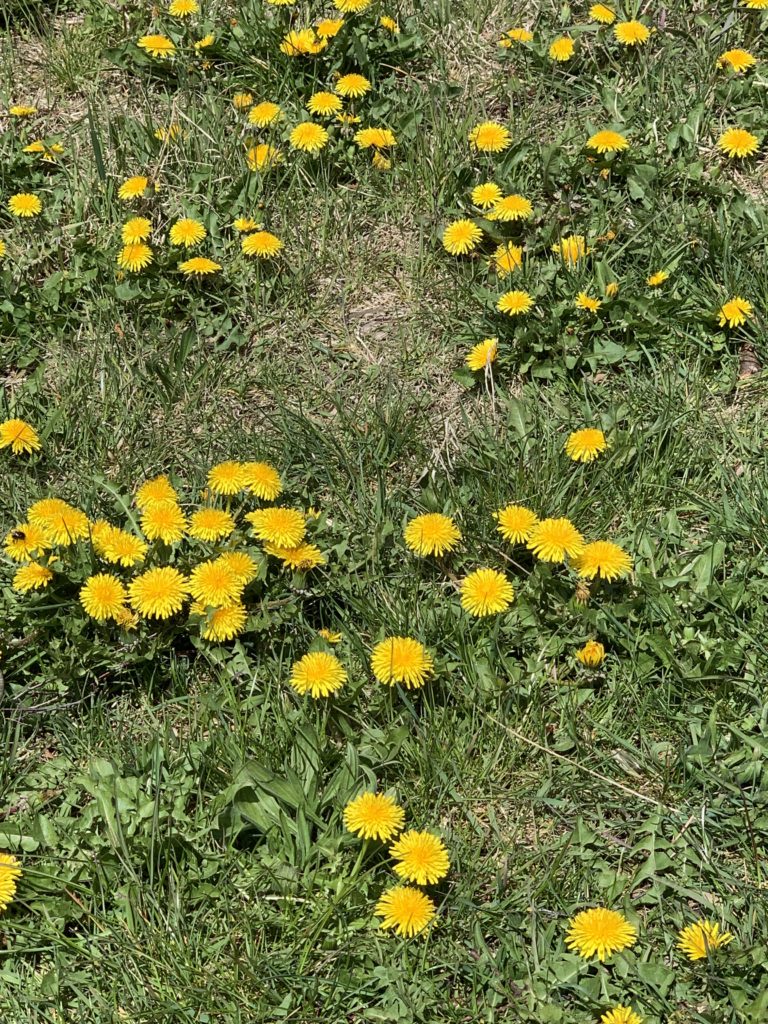
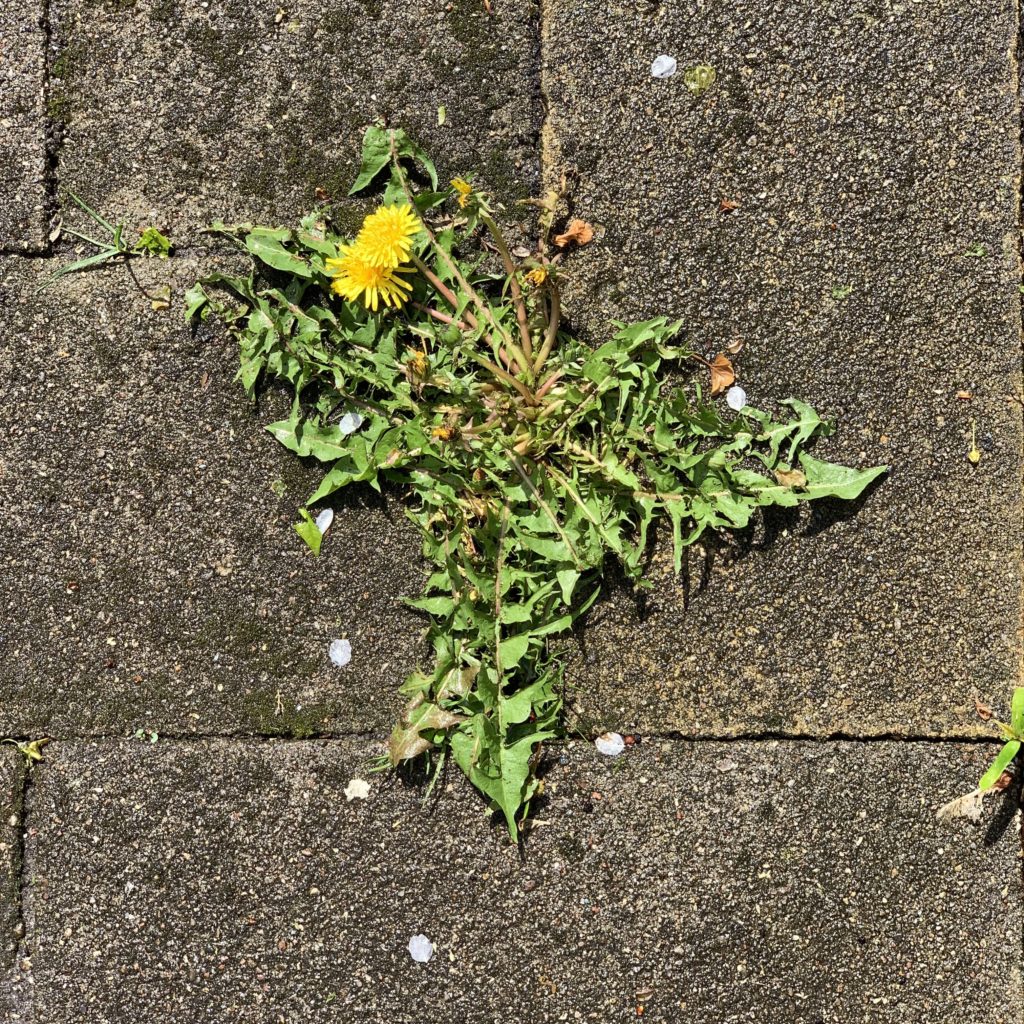

When picking wild flowers or herbs, a few rules apply.
- Respect nature.
- Take only as much as you need.
- Always leave a few plants so they can reproduce.
- Animals also like dandelions, do not steal their feed in excess.
- Nature reserves are of course off limits.
- For collecting a basket is suitable, there the plants are not crushed.
Once you've collected the blossoms, you can set about making your own dandelion champagne.
INGREDIENTS
- 1,5 l water
- 15 gr. dandelion flower petals
- a good 40 gr. raw honey
- 1 lemon in slices
TOOLS
- large pot with lid
- 3 pcs 0,5 liter swing top bottles
For 15 gr. petals, that is only the yellow parts of the blossom, you need to collect about 32 dandelion flowers. Honey is best bought from your local beekeeper or at the market. And the lemon serves as an aid against molds in the fermentation process.
This recipe makes 1.5 quarts of dandelion sparkling wine and yes, I call this drink sparkling wine and that means it is alcoholic.
"You don't believe me? I can prove it to you!"
Through the natural yeasts on the flowers we have a very powerful feed for the alcoholic fermentation, in which the yeasts die and carbonic acid is released. Also honey can be fermented into alcohol perfectly, the most famous result is certainly the honey wine mead. The combination of wild yeasts and honey in this drink produces a small amount of alcohol. Dandelion sparkling wine tastes deliciously tart and not as sweet as my other alcohol ferment from honey, the scrumptious coffee liqueur Katsulua.
PREPARATION
"I made something there."
Remove all the green from the dandelion petals. This is a bit time-consuming, but you will be rewarded with a very fine sweetness without a bitter aftertaste. Cut the lemon into slices.
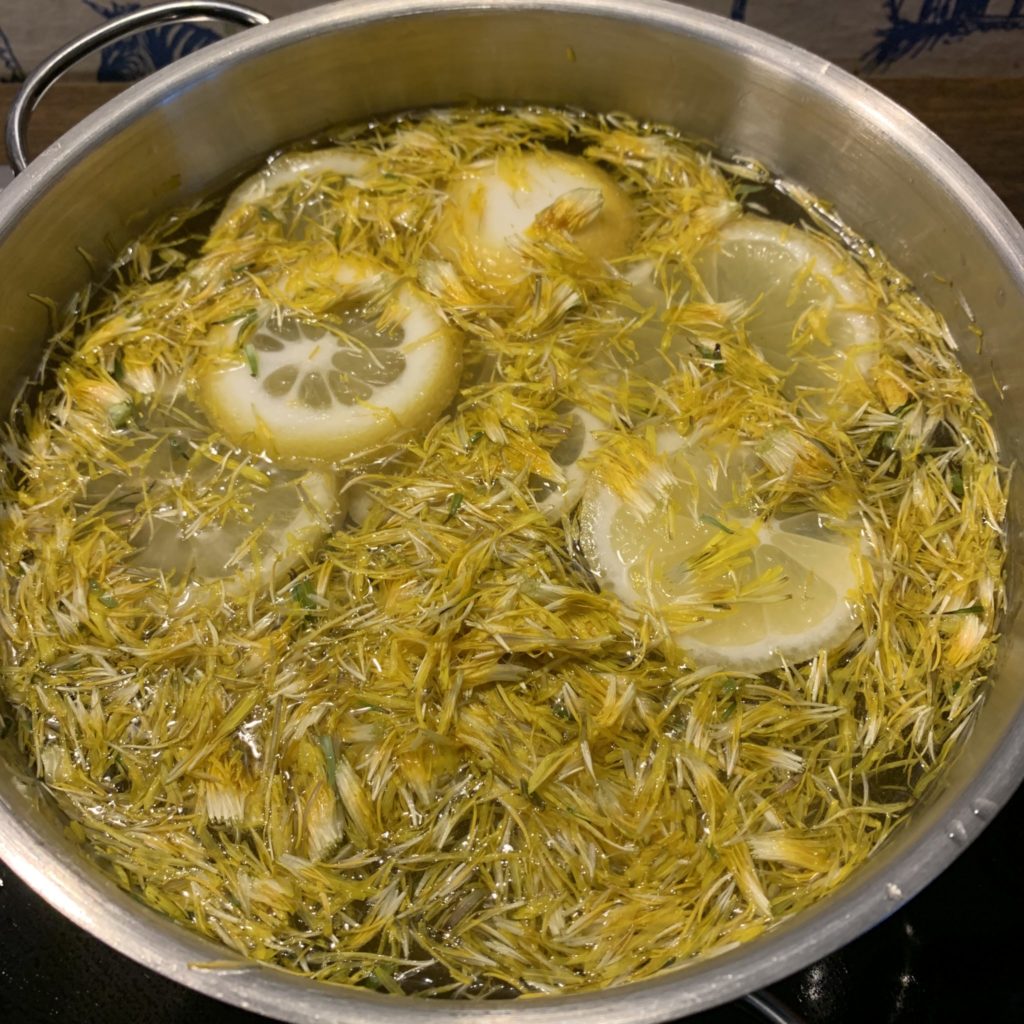
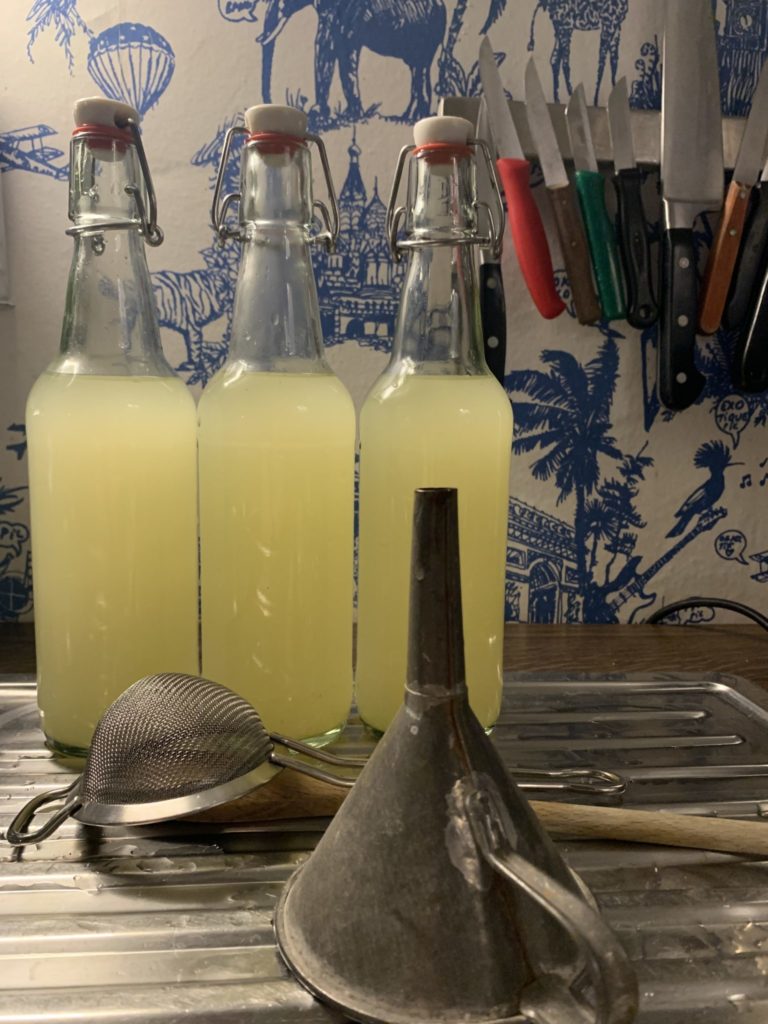

Put water, dandelion flowers, honey and lemon slices in a large pot, stir well and place in a warm place, for example in the kitchen next to the stove. Do not forget to put the lid on, critters should not feast on the dandelion drink. Stir from time to time as you pass, this activates the yeasts.
After about 24 hours you can already enjoy the drink. At that point, no alcohol will have been produced yet, so that even children can try it. It is not a dandelion lemonade, because no significant carbonic acid will have developed yet, but rather a dandelion tonic. It tastes best well chilled!
Let the mixture stand for a maximum of 2 days, it should then be slightly effervescent. If this is not the case, please do not let it stand longer. If the first fermentation is too long, the drink will have a musty aftertaste. Filter with a fine sieve and pour into the bottles. The filling level should be at the base of the neck of the bottles so that there is enough space for the carbon dioxide to develop. It is important that you use sturdy quality swing-top bottles that can withstand the pressure created during fermentation.
Leave the filled bottles in the kitchen. To be on the safe side, I like to spread a kitchen towel over them - even if a bottle gives way to the pressure, I don't have shrapnels in the house.
Dandelion Soda
After one day, there is already plenty of carbonation, but not much alcohol, so the drink is now a dandelion soda. It is still quite sweet. Burp each bottle once, which means opening it slightly and releasing the pressure. Then store the bottles in a cool place, preferably away from light. I have a dedicated ferment refrigerator for this. If I didn't have that, I would put the bottles in the basement. Here, too, explosions can be made less dangerous by placing a cloth or cardboard box over the bottles.
While the sugar from the honey and flowers is slowly metabolized, the alcohol content increases during fermentation. Unopened, the sparkling wine can be kept for at least a year if stored in a cool place and protected from light. We like to drink it on New Year's Eve, and the rest to welcome the new spring, so about a year later. Then at the same time we think of making new sparkling wine again.
How does dandelion champagne taste?
What can I say? Tastes like sparkling wine. With a hint of dandelion honey flavor. Really cool!
„That’s all, folks. So switch off, bye."
Peter Lustig, Löwenzahn
All "quotes" on this page are from Peter Lustig from the ZDF tv broadcast Löwenzahn.
By the way, if you're unsure about anything with my recipe, please do ask me about it! This helps not only you, but also others, because I can explain it better and add it to the recipe. Please use the comment field at the bottom of the page.





Hej!
Bei mir hat sich leider jetzt nach 3 Tagrn so gut wie gar keine Kohlensäure gebildet…habe gestern auf die Flaschen abgezogen.
Könnte es möglicherweise daran liegen, dass die Blüten ziemlich feucht waren, als ich sie gesammelt habe? Durch den dauernden Regen ging das hier nicht anders.
Der Geschmack ist nämlich auch recht wenig intensiv.
Liebe Grüße
Silke
Liebe Silke,
manchmal zeigt sich noch keine Kohlensäure, trotzdem sollte man das Getränk nach spätestens zwei Tagen abfüllen, um den besten Geschmack zu erzielen. Drei Tage ist eventuell auch noch ok, ich drücke Dir die Daumen.
Wenn Du Blüten im Regen pflückst, sind die wilden Hefen natürlich abgewaschen. Eventuell waren in den Blütenblättern versteckt noch genug übrig, dass sie in den Flaschen beginnen können, zu arbeiten. Was passiert, wenn Du die Flaschen leicht öffnest, zischt es dann mittlerweile?
Toi toi toi und viele Grüsse,
Katsu
Do you burp the bottles just the first day as you explain in the recipe or frecuently during all the months you atore them?
Hej Paula,
I stop burping them when I store them to age, but I do make sure they are covered. I like to keep them in my fermentation fridge after the first weeks, too.
Hope it works out for you and you enjoy your homemade blossom champagne as much as I do!
Best,
Katsu
For storage do they need to remain upright? I do have a small wine fridge I could put them in, but they would be laying down horizontally.
Hej Regina,
since there will be a lot of pressure developing I suggest you keep the bottles upright – unless you cork them professionally, like you would do with cava or champagne.
Good luck with your dandelion drink!
Katsu
What could you use instead of lemons (or citrus)
Ginger?
Hej Jenna,
you need the acid mostly for flavor. Any sour juice or pure citric acid should work the same way. The mold will be kept at bay if you stir diligently.
Hope this works for you!
Happy fermenting,
Katsu
danke für das Löwenzahnblüten Sekt Rezept. Es schmeckt lecker, ist gerade 3 Tage alt.
Das freut mich! Ich mach auch gerade einen Ansatz. Herrlich, wie die schönen gelben Blüten wieder überall ihre Köpfe recken.
Wie lange lässt du den Sekt in der Wärme stehen nachdem du ihn in Flaschen abgefüllt hast? Ich hatte ihn 8 Tage auf der Fensterbank und es ist eher eine Löwenzahnessigbrause geworden.
Hej Urda,
wenn Du das Getränk nicht ausfermentieren möchtest, kannst Du es nach 1 Tag trinken. Der Geschmack nach Essig deutet an, dass es zu lange mit Sauerstoff stand, kann das sein? Maximal 2 Tage darf der Sud im Topf stehen, mit Deckel wohlgemerkt.
Du kannst versuchen, die Flaschen bis Ende des Jahres stehen zu lassen, so mache ich das immer. Wenn es allerdings nach Essig schmeckt, wird sich das nicht ändern. Aber Shrubs und Switchel schmecken ja auch lecker.
Ich hoffe, Du kannst den Ansatz noch retten und diese Tips helfen Dir beim nächsten Versuch.
Viel Erfolg!
Katsu
Es könnte sein, dass ich ihn etwas mehr als 2 Tage im Topf hab stehen lassen. Aber mir ist noch nicht ganz klar wie du ihn ausfermentieren lässt. Wie lange lässt du ihn in der Wärme stehen bevor du ihn in den Keller zur Aufbewahrung bringst und geht die Fermentation in der Kälte auch noch weiter?
Ja, genau. Die Fermentation dauert so lange, bis keine verstoffwechselbaren Kohlenhydrate mehr vorhanden sind. In der Kälte dauert das nur deutlich langsamer. Vielleicht hast Du ja Lust, mit einem Gemüse mal einen Versuch zu machen. Drei gleich grosse Gefässe, zu unterschiedlichen Zeiten geöffnet. Das ist oft hilfreich, um die Prozesse zu erfahren – manchmal besser, als nur alles zu lesen.
Gutes Gelingen!
Hallo, also nach den 2 Tagen im topf in flaschen umfüllen. Mit den blüten oder abgesiehen oder gar gefiltert?
Hej Brigitte,
im Rezept steht:“Mithilfe eines feinen Siebes filtern und in die Bügelflaschen füllen.“
Gutes Gelingen!
Katsu
Hallo,
Ich als blutiger Anfänger möchte jetzt auch einmal Löwenzahnsekt ansetzen.
Leider bekomme ich auf die Schnelle keine passenden Bügelflaschen.
Jetzt meine Frage, gehen auch Bierflaschen?
Hej Knut,
wenn die Bierflaschen Beugelbottles sind, kannst du sie benutzen. Kronkorken empfehle ich nicht. Und bitte, wenn du Anfänger bist, ist dieses Rezept nicht geeignet. Sammle Erfahrungen mit Fermenten, die nicht ins Auge gehen können.
Bleib‘ gesund!
Katsu
Hallo liebe Katsu, ich möchte gern ein „normales“ Löwenzahnferment machen, d.h. über die alkoholische Kohlensäurephase hinaus, damit es wie ein fermentierter Saft quasi wird. Lasse ich es dann abgefiltert einfach etwas länger in der Wärme stehen wie beim Sauerkraut? Ich würde das Ferment auch aus allen Pflanzenteilen machen wollen. Wir haben unlängst fermentierten Löwenzahnextrakt gekauft (teuer!!), der ist zwar mit Milchsäurebakterien hergestellt, aber das sollte doch auch mit der natürlichen Hefe funktionieren? Wie lange würdest Du es warm stehen lassen, so 7-10 Tage? Danke und viele Grüße! Lisa
Hej Lisa,
aus Alkohol wird Essig, das meinst du aber wahrscheinlich nicht? Normale Löwenzahnfermente kenne ich nicht, unter milchsauer fermentiertem Saft bei Löwenzahn kann ich mir vage was vorstellen.
Du dürftest nur wenige Blüten benutzen, zu viel Hefe hat da nichts zu suchen, wenn du keinen Alkohol oder Essig produzieren möchtest. Hacke vor allem die Wurzeln und ein paar Stängel und Blätter grob, benutze maximal 4-5 Blüten pro Liter und bestreue alles mit 2% Salz und schau, wieviel Lake entsteht. Bei Bedarf gib noch 2%ige Lake dazu. Nach 2-3 Wochen kannst du probieren, wenn du es magst, kannst du es abseihen und im Kühlschrank lagern. Es sollte schnell verbraucht werden.
Ich kann mir ehrlich gesagt nicht vorstellen, dass ich dieses Gebräu geniessen würde, aber wenn du es ausprobierst, berichte bitte, ob es deinen Vorstellungen entspricht.
Gutes Gelingen!
Katsu
Ist das lecker.
Habe jetzt die zweite Portion angesetzt. Bei der ersten war ich mit dem Belüften zu vorsichtig und die Kohlensäure war draussen.
Jetzt hat sich schon ordentlich Kohlensäure gebildet und die erste Flasche ist schon wieder leer.
Zum Wohl!